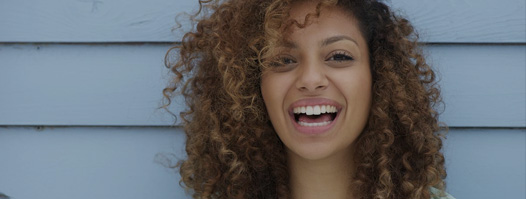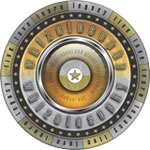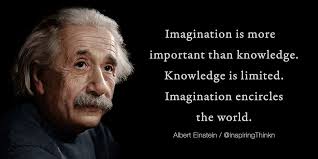- Abuse & The Abuser
- Achievement
- Activity, Fitness & Sport
- Aging & Maturity
- Altruism & Kindness
- Atrocities, Racism & Inequality
- Challenges & Pitfalls
- Choices & Decisions
- Communication Skills
- Crime & Punishment
- Dangerous Situations
- Dealing with Addictions
- Debatable Issues & Moral Questions
- Determination & Achievement
- Diet & Nutrition
- Employment & Career
- Ethical dilemmas
- Experience & Adventure
- Faith, Something to Believe in
- Fears & Phobias
- Friends & Acquaintances
- Habits. Good & Bad
- Honour & Respect
- Human Nature
- Image & Uniqueness
- Immediate Family Relations
- Influence & Negotiation
- Interdependence & Independence
- Life's Big Questions
- Love, Dating & Marriage
- Manners & Etiquette
- Money & Finances
- Moods & Emotions
- Other Beneficial Approaches
- Other Relationships
- Overall health
- Passions & Strengths
- Peace & Forgiveness
- Personal Change
- Personal Development
- Politics & Governance
- Positive & Negative Attitudes
- Rights & Freedom
- Self Harm & Self Sabotage
- Sexual Preferences
- Sexual Relations
- Sins
- Thanks & Gratitude
- The Legacy We Leave
- The Search for Happiness
- Time. Past, present & Future
- Today's World, Projecting Tomorrow
- Truth & Character
- Unattractive Qualities
- Wisdom & Knowledge
Health & Wellness Wednesdays
Imagination & Adventure
When I was 7, I went to space.
I was one of two astronauts aboard a cardboard rocket ship that launched from the space station at the top of my parents' staircase.
It was a groundbreaking expedition, and my fellow astronaut and I spend hours exploring every planet we could find around the house.
The adventure may not have contributed to NASA's wealth of research, but it certainly left fond memories for myself and my co-pilot.
As children, imagination allowed us to go wherever we wanted. Do whatever we wanted. Be anything we could dream up. There were no limits to the future.
At some point, that kind of dreaming, believing, and wishing stops being encouraged. Children grow up and are told to adapt "realistic expectations", to live quiet lives and follow societal norms.
I can't remember exactly when it was that I stopped dreaming, but I can point to the moment I started again. The thing about imagination is that yeah, you might wish for some pretty unrealistic things, but if you go without it, you deprive yourself of an incredible amount of joy, excitement, and cut off any change of doing the unlikely.
We all crave adventure. But there's no question that adventure is much more accessible when you let yourself dream.
Last week, NASA partnered with SpaceX to launch humans to the International Space Station for the first time. This is the culmination of well over a decade's worth of work -- and is the first time a commercial vehicle has ever taken humans to the International Space Station.
The organization has publicly said that part of the reason they've taken so long to perfect the details is because they want to inspire the next generation to be involved in furthering the endeavour of human space exploration.
Our future explorers are at home right now, building cardboard spaceships and dreaming of soaring into the unknown. They're dreaming.
To crave adventure is to be human. To abandon unlikely possibilities is to waste your life.
Start dreaming. Live your life to the fullest. Abandon your comfort zone and charge into the unknown.
Interesting Fact #1
72% of people have creative insights in the shower.
Interesting Fact #2
Creativity is more easily accessed when you are alone.
Interesting Fact #3
Experiencing trauma often allows you to tap into and experience more creativity and can inspire great works of art.
Quote of the day
The man who has no imagination has no wings.
Article of the day - Why You Should Have a Child-Like Imagination (and the Research that Proves It)
In our innovation sessions, we often use a warm-up question that’s a fill-in-the-blank: "People would be more creative if..." While there are always lots of varied and creative answers, one answer that always comes up is, “...if they would act like a kid.”
We all seem to have an instinctive sense that kids are more creative than adults. We don’t question it; we all intuitively just know it’s true and we view it as a natural state for children. And it is. According to Dr. Stephanie Carlson, an expert on childhood brain development at the University of Minnesota, kids spend as much as 2/3 of their time in non-reality—in imaginative play. Other experts have also noted children’s aptitude for creativity. Albert Einstein famously said, “To stimulate creativity, one must develop the childlike inclination for play.” And even Pablo Picasso said, “Every child is an artist. The problem is how to remain an artist once we grow up.”
As Picasso noted, when it comes to creativity in adults, our beliefs about it seem to change. There are lots of perceptions in our ethos about creativity—that it’s elusive and mysterious, that it comes in an “a-ha” moment that we can’t predict or control for, and that any individual is either creative or not. Somehow, what is totally natural for every child seems unnatural when we’re adults.
Of course, that’s not true for all adults. We acknowledge that there are highly creative adults out there. But we believe that’s a sub-set of people, and we make assumptions—some of them negative—about those “creative types.” Even as we start to value creativity more in adults, we still have some sticky assumptions about creative people. You know them even if you don’t believe all of them: creative people are unrestrained, they lack discipline, they’re not grounded in reality. Because kids, to some degree, are the embodiment of creativity, we assign other child-like traits to creative adults—and assume those child-like traits go hand-in-hand with creativity.
One of the child-like traits that is often associated with creativity is lack of self-control. In fact, we have almost come to see creativity and self-control as mutually exclusive—creativity is child-like; self-control is adult-like. This may be the basis of many of the perceptions we have about creative adults. Highly creative people are less self-controlled (more child-like), and highly self-controlled people are less creative (thus more “adult”).
So are creativity and self-control mutually exclusive? I recently spoke with Dr. Carlson, who is studying pre-school-aged children to see if their immersion in non-reality is getting in the way of developing self-control. She shared some of her findings with me:
Dr. Carlson’s conclusion is that practice in pretending helps you come up with alternative ways of being—and of seeing an issue—and results in more creativity and better problem-solving.
First, a definition. What we think of as "self-control" is actually a group of mental processes that, together, are called “executive function.” Executive function is the conscious, effortful control of yourself (as opposed to automatic or non-conscious control of things like breathing). So it’s self-regulatory, in that we have to think about it. Our executive function allows us to do things like not blurt out something inappropriate when it occurs to us, or to wait in line without getting overly frustrated, or to listen to instructions and wait until they’re done before acting, or to hold in mind the rules of a game—and to switch our actions when the rules change.
Executive function involves a few mental processes:
- Working memory—the ability to hold things in mind.
- Inhibitory control—the ability to stop or suppress an action that might be the first choice.
- Flexibility—the ability to nimbly shift your focus of attention to adapt to a new, or difficult situation.
As you might assume, executive function is not well-developed in young children. In fact, the pre-frontal cortex (or area of the brain responsible for much of executive function) is not fully developed until well into the teenage years. Dr. Carlson is specifically studying the development of executive function and imaginative play, and the correlation between the two, to see if they’re contradictory.
Her conclusion: creativity and executive function are not at all contradictory in childhood development. In fact, they work in collaboration, and bootstrap each other in development. In order to pretend, you have to hold things in mind—and inhibit reality and the way you normally act on reality. For example, if you’re pretending a spoon is a car, you have to remember that the spoon is a car, and you have to resist the inclination to put the spoon in your mouth. This is calling upon and exercising your executive function.
The Supporting Research
Three types of research have supported her conclusion that creativity and executive function work together in kids’ development:
- Observation. Kids were told they could either have one marshmallow immediately, or if they waited until the researcher returned, they could have more. The kids were observed by the researcher during the waiting period. Kids who successfully waited used imagination to help them. They would pretend to eat the treat, or feed it to an imaginary friend. Or they would use a symbolic strategy to wait, like singing a song about “I’m waiting.” So, using imaginative play is a technique that helps kids exercise self-control.
- Correlation. Kids were rated on their level of fantasy and imaginative play, based on parents’ descriptions. Then the kids were given a task related to executive function, and their performance on the task was rated. It turns out there’s a high correlation between level of pretending and executive function skills.
- Experimental. Kids were randomly assigned to do one of two things: 1) Pretend you’re someone else, like Batman or Rapunzel (including wearing a prop), or 2) Think really hard about your own thoughts and feelings. Then, the kids were all asked to do the same executive function task. The kids who were told to pretend did significantly better on the executive function task. So again, using imagination is actually helping their self-control.
 Dr. Carlson’s conclusion is that practice in pretending helps you come up with alternative ways of being—and of seeing an issue—and results in more creativity and better problem-solving.
Dr. Carlson’s conclusion is that practice in pretending helps you come up with alternative ways of being—and of seeing an issue—and results in more creativity and better problem-solving.
As adults, even though it still sometimes appears that creativity and self-control are at odds, when we think more deeply about creating—or about problem-solving—we know they’re not. In addition to our stereotypes about “flighty” creative people, we also have other stereotypes about the disciplined, methodical, diligent (highly self-controlled) inventor or scientist who makes breakthrough, innovative discoveries.
Einstein, who said we need to be child-like to be creative, also said, “Genius is one percent inspiration, ninety-nine percent perspiration.” We know that invention and innovation take work and preparation. For example, it’s hard to imagine that someone who wasn’t an expert in cancer and medicine would come up with the cure for cancer in a spontaneous burst of “creativity.”
Creativity isn’t about ignoring facts; fact-finding and research are critical elements in the creative process. But so is imagination. To get to innovative ideas and solutions, we have to constantly toggle between analysis and synthesis, or between reality and possibility. The following excerpt from a Newsweek article entitled, “The Creativity Crisis” explains what’s happening in the brain during creative thinking:
"To understand...requires first understanding the new story emerging from neuroscience. The lore of pop psychology is that creativity occurs on the right side of the brain. But we now know that if you tried to be creative using only the right side of your brain, it’d be like living with ideas perpetually at the tip of your tongue, just beyond reach.
When you try to solve a problem, you begin by concentrating on obvious facts and familiar solutions, to see if the answer lies there. This is a mostly left-brain stage of attack. If the answer doesn’t come, the right and left hemispheres of the brain activate together. Neural networks on the right side scan remote memories that could be vaguely relevant. A wide range of distant information that is normally tuned out becomes available to the left hemisphere, which searches for unseen patterns, alternative meanings, and high-level abstractions.
Having glimpsed such a connection, the left brain must quickly lock in on it before it escapes. The attention system must radically reverse gears, going from defocused attention to extremely focused attention. In a flash, the brain pulls together these disparate shreds of thought and binds them into a new single idea that enters consciousness. This is the 'aha!' moment of insight, often followed by a spark of pleasure as the brain recognizes the novelty of what it's come up with.
Now the brain must evaluate the idea it just generated. Is it worth pursuing? Creativity requires constant shifting, blender pulses of both divergent thinking and convergent thinking, to combine new information with old and forgotten ideas. Highly creative people are very good at marshaling their brains into bilateral mode, and the more creative they are, the more they dual-activate."
So, it’s clear that keeping our imagination sharp would be a highly useful tool in creative thinking and problem solving. Unfortunately, we do lose some of our playful curiosity and creative imagination as we mature. Studies have shown it, and I think most of us would agree our observations confirm it. One study involving 350 children showed that kids’ natural tendency to daydream and wonder declines sharply around 4th grade.
Why does our natural creativity wane as we mature? There are a few possible reasons. Dr. Carlson says simple lack of practice is one reason. As we are forced to turn our attention to logic, reason, and facts in school, we spend more of our time and brain power in reality—and less in creative imagination.
I believe another reason is the fear of being wrong. Kids don’t worry about whether they’re wrong. They bravely forge into new territory, willing to, and assuming they will, often be wrong. However, as we mature, we quickly learn that being wrong often has negative consequences. At school, we’re penalized for being wrong. At work, we’re penalized for being wrong. According to Sir Ken Robinson, an expert in creativity, “If you’re not prepared to be wrong, you’ll never come up with anything original.”
Since creativity inherently requires a willingness to possibly be wrong, we begin to avoid it. For many of us, we become so good at avoiding it that we convince ourselves we’re “not creative.” In addition, many factors that seem related to the self-controlled aspect of ourselves—like research, facts, or being grounded in reality—feel like they’re helping us mitigate the risk of being wrong. So we rely more and more on our executive function skills and behaviors, and less and less on our imaginative behaviors.
The obvious tool to think differently and problem-solve more creatively is to pretend. That's it. Just pretend.
So How Can We Think More Like a Kid?
There are lots and lots of tools and techniques that we innovation consultants and creativity experts use to help people think differently, and problem-solve more creatively. But here’s the obvious, simple one that anyone can do at any time: Pretend. That’s it. Just pretend.
Pretending works. Dr. Carlson has proven it with kids, and another study has proven it with adults. Darya Zabelina and Michael Robinson of North Dakota State University gave two groups of adult graduate students the same instruction, with one key difference. Both groups were told:
“School is canceled, and you have the entire day to yourself. What would you do?
Where would you go? Who would you see?”
However, for one group, the instruction was prefaced with, “You are 7-years-old.” Both groups had 10 minutes to write their answers, and both were then given several tests of creativity. The people who were “primed” to pretend they were 7-years-old showed significantly higher levels of creative originality.
So, next time you’re facing a challenge or an issue that you need to solve, let go of some of your self-control, and re-ignite your child-like imagination. Pretend a spoon is a car, or pretend that you are Mickey Mouse or Ronald Reagan. Now look at your problem again, and you’ll find more creative possibilities.
In other words, keep in mind that, “People would be more creative if...they prepare like an adult, and also act like a kid.”
Question of the day - As a kid, what did you want to be when you grew up?
Experience & Adventure
As a kid, what did you want to be when you grew up?










